Apoorva Bhandari
@apaxon.bsky.social
Cognitive neuroscientist at Brown University
Reposted by Apoorva Bhandari
🚨 We’re hiring! The Computational Cognitive Neuroscience Lab at Virginia Tech is looking for a postdoc to join our team studying the neural + computational mechanisms of structure learning and flexible cognition: ccnvt.github.io#positions
CCN Lab
ccnvt.github.io
July 10, 2025 at 12:17 PM
🚨 We’re hiring! The Computational Cognitive Neuroscience Lab at Virginia Tech is looking for a postdoc to join our team studying the neural + computational mechanisms of structure learning and flexible cognition: ccnvt.github.io#positions
Reposted by Apoorva Bhandari
New Paper: Continuous Thought Machines
pub.sakana.ai/ctm/
Neurons in brains use timing and synchronization in the way that they compute, but this is largely ignored in modern neural nets. We believe neural timing is key for the flexibility and adaptability of biological intelligence.
Thread ↓
pub.sakana.ai/ctm/
Neurons in brains use timing and synchronization in the way that they compute, but this is largely ignored in modern neural nets. We believe neural timing is key for the flexibility and adaptability of biological intelligence.
Thread ↓
May 12, 2025 at 2:38 AM
New Paper: Continuous Thought Machines
pub.sakana.ai/ctm/
Neurons in brains use timing and synchronization in the way that they compute, but this is largely ignored in modern neural nets. We believe neural timing is key for the flexibility and adaptability of biological intelligence.
Thread ↓
pub.sakana.ai/ctm/
Neurons in brains use timing and synchronization in the way that they compute, but this is largely ignored in modern neural nets. We believe neural timing is key for the flexibility and adaptability of biological intelligence.
Thread ↓
Reposted by Apoorva Bhandari
Check out our new special issue on cognitive flexibility @coolscontrol.bsky.social: authors.elsevier.com/a/1l4vl8MqMi...
authors.elsevier.com
May 12, 2025 at 10:23 PM
Check out our new special issue on cognitive flexibility @coolscontrol.bsky.social: authors.elsevier.com/a/1l4vl8MqMi...
Reposted by Apoorva Bhandari
Maps are everywhere in the brain...and finally we've discovered one in the nose! Led by @davidhbrann.bsky.social, we uncovered the logic that specifies the positions of each of the 1,000 sensory neuron subtypes in the nose and aligns their projections to the brain.👇👃see more details below👃👇

A spatial code governs olfactory receptor choice and aligns sensory maps in the nose and brain
Although topographical maps organize many peripheral sensory systems, it remains unclear whether olfactory sensory neurons (OSNs) choose which of the ~1100 odor receptors (ORs) to express based upon t...
www.biorxiv.org
May 9, 2025 at 8:44 PM
Maps are everywhere in the brain...and finally we've discovered one in the nose! Led by @davidhbrann.bsky.social, we uncovered the logic that specifies the positions of each of the 1,000 sensory neuron subtypes in the nose and aligns their projections to the brain.👇👃see more details below👃👇
Reposted by Apoorva Bhandari
Looking for an exciting fellowship in AI & Neuro, with competitive salary (~£100k)? We got a new position in the lab at Oxford, working with @somnirons.bsky.social and me! 🧪
Our project: encode.pillar.vc/projects/beh...
General info: encode.pillar.vc
#compneuro #neuroai #neuroscience #sciencejobs
Our project: encode.pillar.vc/projects/beh...
General info: encode.pillar.vc
#compneuro #neuroai #neuroscience #sciencejobs

ARIA Opportunity Space: Scalable Neural Interfaces
encode.pillar.vc
March 23, 2025 at 7:45 PM
Looking for an exciting fellowship in AI & Neuro, with competitive salary (~£100k)? We got a new position in the lab at Oxford, working with @somnirons.bsky.social and me! 🧪
Our project: encode.pillar.vc/projects/beh...
General info: encode.pillar.vc
#compneuro #neuroai #neuroscience #sciencejobs
Our project: encode.pillar.vc/projects/beh...
General info: encode.pillar.vc
#compneuro #neuroai #neuroscience #sciencejobs
Reposted by Apoorva Bhandari
Why do we not remember being a baby? One idea is that the hippocampus, which is essential for episodic memory in adults, is too immature to form individual memories in infancy. We tested this using awake infant fMRI, new in @science.org #ScienceResearch www.science.org/doi/10.1126/...
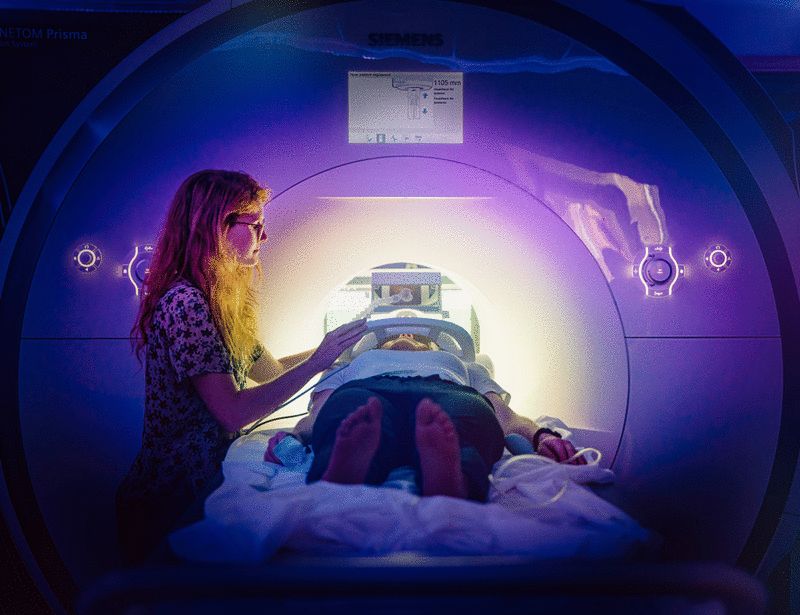
Hippocampal encoding of memories in human infants
Humans lack memories for specific events from the first few years of life. We investigated the mechanistic basis of this infantile amnesia by scanning the brains of awake infants with functional magne...
www.science.org
March 20, 2025 at 6:37 PM
Why do we not remember being a baby? One idea is that the hippocampus, which is essential for episodic memory in adults, is too immature to form individual memories in infancy. We tested this using awake infant fMRI, new in @science.org #ScienceResearch www.science.org/doi/10.1126/...
Reposted by Apoorva Bhandari
Excited to share our latest story! We found disentangled memory representations in the hippocampus that generalized across time and environments, despite the seemingly random drift and remapping of single cells. This code enabled the transfer of prior knowledge to solve new tasks
March 17, 2025 at 1:35 AM
Excited to share our latest story! We found disentangled memory representations in the hippocampus that generalized across time and environments, despite the seemingly random drift and remapping of single cells. This code enabled the transfer of prior knowledge to solve new tasks
Reposted by Apoorva Bhandari
If you are curious about the brain🧠 on causal inference, insight💡, memory retrieval, and narrative comprehension🎬, this will be the one.
work by dream team @jinke.bsky.social Rhea Madhogarhia @ycleong.bsky.social @monicarosenb.bsky.social ⭐
work by dream team @jinke.bsky.social Rhea Madhogarhia @ycleong.bsky.social @monicarosenb.bsky.social ⭐
Cortical reinstatement of causally related events sparks narrative insights by updating neural representation patterns https://www.biorxiv.org/content/10.1101/2025.03.12.642853v1
March 13, 2025 at 2:58 PM
If you are curious about the brain🧠 on causal inference, insight💡, memory retrieval, and narrative comprehension🎬, this will be the one.
work by dream team @jinke.bsky.social Rhea Madhogarhia @ycleong.bsky.social @monicarosenb.bsky.social ⭐
work by dream team @jinke.bsky.social Rhea Madhogarhia @ycleong.bsky.social @monicarosenb.bsky.social ⭐
Reposted by Apoorva Bhandari
Nature research paper: Basis functions for complex social decisions in dorsomedial frontal cortex
https://go.nature.com/3FsvUTi
https://go.nature.com/3FsvUTi

Basis functions for complex social decisions in dorsomedial frontal cortex - Nature
A study combining group decision-making tasks with fMRI shows that the brain’s dorsomedial prefrontal cortex uses basis functions, similar to those in the visual, motor and spatial domains, to represent patterns of social interaction.
go.nature.com
March 13, 2025 at 7:28 PM
Nature research paper: Basis functions for complex social decisions in dorsomedial frontal cortex
https://go.nature.com/3FsvUTi
https://go.nature.com/3FsvUTi
Reposted by Apoorva Bhandari
How did early human symbolic behavior evolve? osf.io/preprints/ps... Can we use cultural transmission chains to explore how humans were using and producing the 40k-year of engravings from Blombos & Diepkloof? W Pagnotta Tylén @felixthehauskat.bsky.social & others. A thread:


March 12, 2025 at 4:15 PM
How did early human symbolic behavior evolve? osf.io/preprints/ps... Can we use cultural transmission chains to explore how humans were using and producing the 40k-year of engravings from Blombos & Diepkloof? W Pagnotta Tylén @felixthehauskat.bsky.social & others. A thread:
Reposted by Apoorva Bhandari
Our paper in Nature (@mkwittmann.bsky.social et al.): the brain does not only process the *identity* of a person but primarily our *relationship* to them. Even on a neural level, who someone is *in relation to others* is key. www.nature.com/articles/s41...
#PsychSciSky #socialpsyc #neuroskyence
#PsychSciSky #socialpsyc #neuroskyence
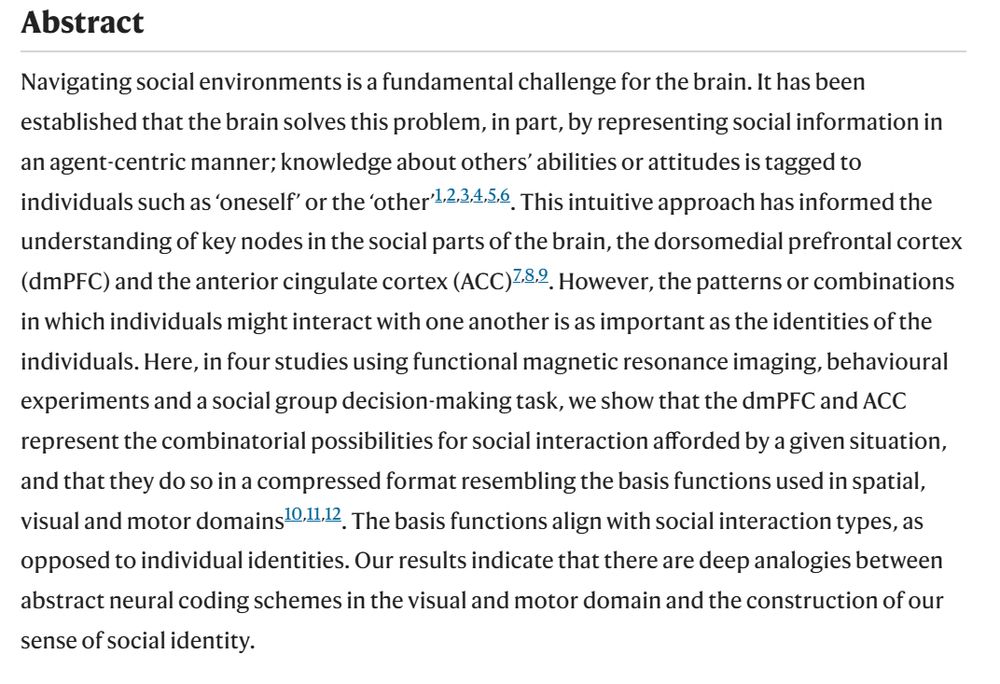
March 12, 2025 at 5:37 PM
Our paper in Nature (@mkwittmann.bsky.social et al.): the brain does not only process the *identity* of a person but primarily our *relationship* to them. Even on a neural level, who someone is *in relation to others* is key. www.nature.com/articles/s41...
#PsychSciSky #socialpsyc #neuroskyence
#PsychSciSky #socialpsyc #neuroskyence
Reposted by Apoorva Bhandari
New from the lab!! 👉🏼 authors.elsevier.com/a/1kgT43BtfH... 📝 @cellpress.bsky.social We discovered that genetically-defined neuron types in the hippocampus form unique manifolds! Dual color imaging, chemogenetics and topological analysis all at once! With Juan Gallego @juangallego.bsky.social
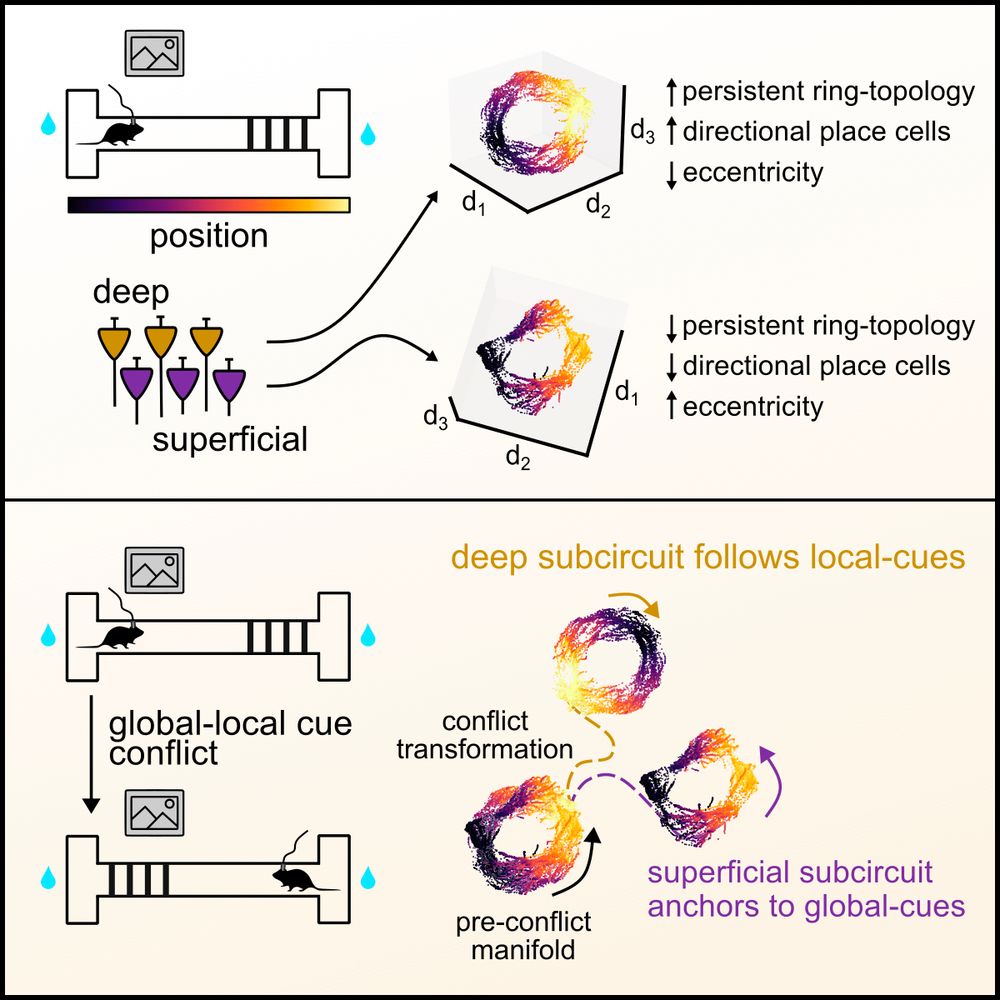
February 26, 2025 at 4:16 PM
New from the lab!! 👉🏼 authors.elsevier.com/a/1kgT43BtfH... 📝 @cellpress.bsky.social We discovered that genetically-defined neuron types in the hippocampus form unique manifolds! Dual color imaging, chemogenetics and topological analysis all at once! With Juan Gallego @juangallego.bsky.social
Reposted by Apoorva Bhandari
Averaging brain responses is not a great idea...
#neuroscience #neuroskyence
www.nature.com/articles/s41...
#neuroscience #neuroskyence
www.nature.com/articles/s41...
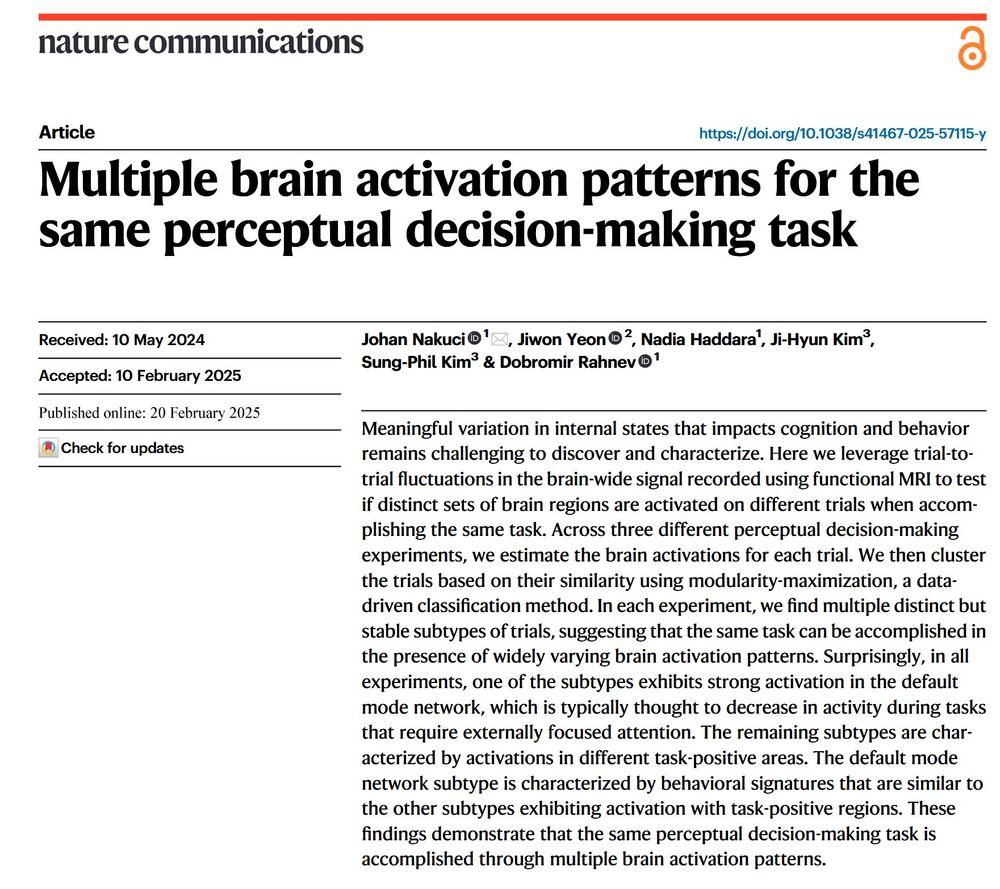
February 23, 2025 at 4:27 PM
Averaging brain responses is not a great idea...
#neuroscience #neuroskyence
www.nature.com/articles/s41...
#neuroscience #neuroskyence
www.nature.com/articles/s41...
Reposted by Apoorva Bhandari
Computation-through-Dynamics Benchmark: Simulated datasets and quality metrics for dynamical models of neural activity https://www.biorxiv.org/content/10.1101/2025.02.07.637062v1
February 9, 2025 at 5:18 AM
Computation-through-Dynamics Benchmark: Simulated datasets and quality metrics for dynamical models of neural activity https://www.biorxiv.org/content/10.1101/2025.02.07.637062v1
Reposted by Apoorva Bhandari
Does the culture you grow up in shape the way you see the world? In a new Psych Review paper, @chazfirestone.bsky.social & I tackle this centuries-old question using the Müller-Lyer illusion as a case study. Come think through one of history's mysteries with us🧵(1/13):
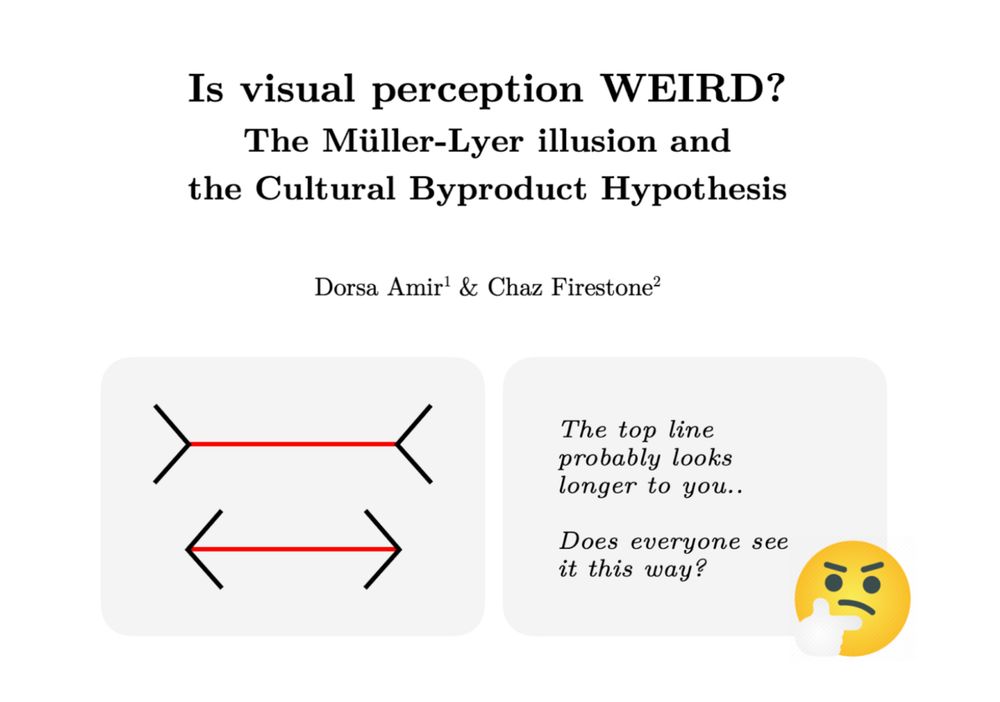
January 25, 2025 at 10:05 PM
Does the culture you grow up in shape the way you see the world? In a new Psych Review paper, @chazfirestone.bsky.social & I tackle this centuries-old question using the Müller-Lyer illusion as a case study. Come think through one of history's mysteries with us🧵(1/13):
Reposted by Apoorva Bhandari
Cool new work from my labmate Alice!
Knowledge of information cascades through social networks facilitates strategic gossip: http://osf.io/yq82d/
August 2, 2024 at 7:39 PM
Cool new work from my labmate Alice!
New paper with Alice Xia, Yang Teoh and Oriel FeldmanHall.
Knowledge of information cascades through social networks facilitates strategic gossip: http://osf.io/yq82d/
August 3, 2024 at 2:20 PM
New paper with Alice Xia, Yang Teoh and Oriel FeldmanHall.
New preprint w/ Haley Keglovits & David Badre. lPFC flexibly codes tasks of diff structure. How? We test 2 prevalant ideas 1) it uses a high dim, expressive geometry, agnostic to structure 2) it learns tailored geometries for each structure. tldr - Its 1*
www.biorxiv.org/content/10.1...
www.biorxiv.org/content/10.1...

Task structure tailors the geometry of neural representations in human lateral prefrontal cortex
bioRxiv - the preprint server for biology, operated by Cold Spring Harbor Laboratory, a research and educational institution
www.biorxiv.org
March 9, 2024 at 7:06 PM
New preprint w/ Haley Keglovits & David Badre. lPFC flexibly codes tasks of diff structure. How? We test 2 prevalant ideas 1) it uses a high dim, expressive geometry, agnostic to structure 2) it learns tailored geometries for each structure. tldr - Its 1*
www.biorxiv.org/content/10.1...
www.biorxiv.org/content/10.1...
Reposted by Apoorva Bhandari
Philosophical Transactions of the Royal Society B: Biological Sciences
Refocusing neuroscience: moving away from mental categories and towards complex behaviours
#neuroskyence
royalsocietypublishing.org/doi/10.1098/...
Refocusing neuroscience: moving away from mental categories and towards complex behaviours
#neuroskyence
royalsocietypublishing.org/doi/10.1098/...
royalsocietypublishing.org
December 24, 2023 at 6:17 AM
Philosophical Transactions of the Royal Society B: Biological Sciences
Refocusing neuroscience: moving away from mental categories and towards complex behaviours
#neuroskyence
royalsocietypublishing.org/doi/10.1098/...
Refocusing neuroscience: moving away from mental categories and towards complex behaviours
#neuroskyence
royalsocietypublishing.org/doi/10.1098/...
New preprint alert! Another productive collaboration with Oriel FeldmanHall led by Marc-Lluis Vives & @jaeyoungson.bsky.social. We show how people keep track of information flow in a social network, by building successor reps, and reshaping them overnight with replay. www.biorxiv.org/content/10.1...
December 21, 2023 at 1:00 PM
New preprint alert! Another productive collaboration with Oriel FeldmanHall led by Marc-Lluis Vives & @jaeyoungson.bsky.social. We show how people keep track of information flow in a social network, by building successor reps, and reshaping them overnight with replay. www.biorxiv.org/content/10.1...

